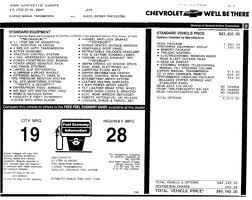An adult conversation with a client about pricing has to begin with a blunt recognition of two things:
- If the solution doesn’t involve true risk sharing then the proposal has no mutuality; and
- Value largely lies in the eyes of the client, and is not determined by the tonnage of inputs expended in obtaining the result. What matters is output, not input.
Occasionally—not often enough, which made each example deeply memorable—I was witness as an associate to a partner drawing up a bill at the end of some rather protracted and complex matter, reading in full:
For professional services rendered in re ____________:
$XXX,000.00
This didn’t even require an 8-1/2 x 11 sheet of paper; a half-sheet would suffice.
You might think this exercise in gross approximation would invite second-guessing, even expostulation, by the client.
It never did. Not once was one of these bills questioned, nor was payment ever other than prompt, indeed nearly immediate.
Maybe we should all now view that as a quaint artifact of a bygone era, from our sophisticated and enlightened perch with 130 pricing advisors at hand.
Why try that antique practice again?
Because every one of the admittedly few times I saw such a bill, it struck me at once: That’s the right number. That, in other words, was the value of the work we’d done and the result we’d obtained.
I choose to believe we could do far worse than to get back to that.
The greatest obstacle is that it requires of us the courage and conviction to determine what $XXX,000.00 is. It requires us, in other words, to put a value on our work.
But if that isn’t that what the entire pricing conversation is all about, then what are we doing?




This implies that lawyers and their bills fit Oscar Wilde’s famous definition of a cynic: one who knows the price of everything and the value of nothing. Perhaps if law firms stopped telling their partners “You must bill 1600 hours this year and provide 1600 hours of work for associates” and instead said “Your goal is to do work that’s worth $500,000 to our clients and involve associates in work that’s worth another $300,000 to our clients,” lawyers would change their frame on mind.
All of my business clients are managed by their owners, who can spend their money hiring me to do legal work, or on buying new machines or more real estate, or on a vacation in Europe. One of my tasks as a businessman selling my services is to provide enough value that my clients are happy they hired me instead of buying something else or taking a vacation.